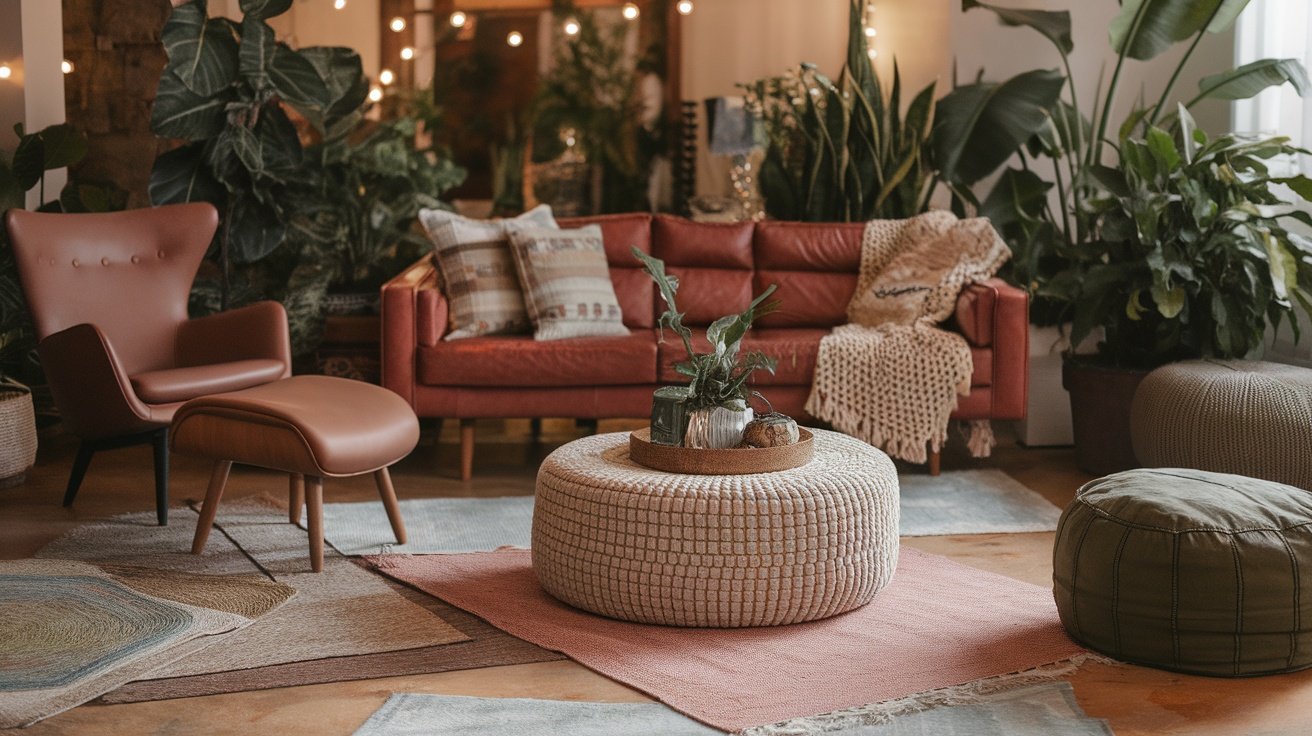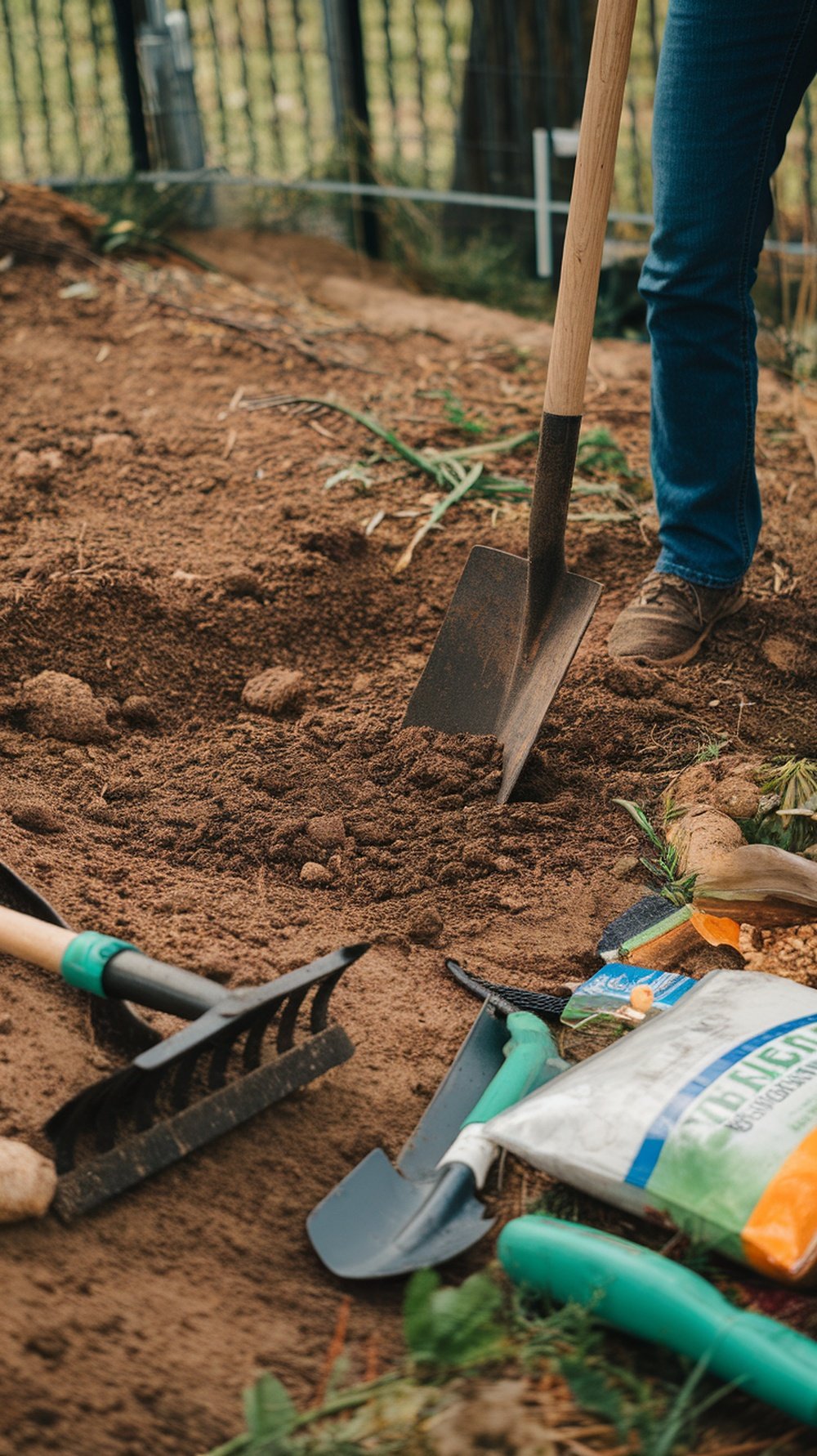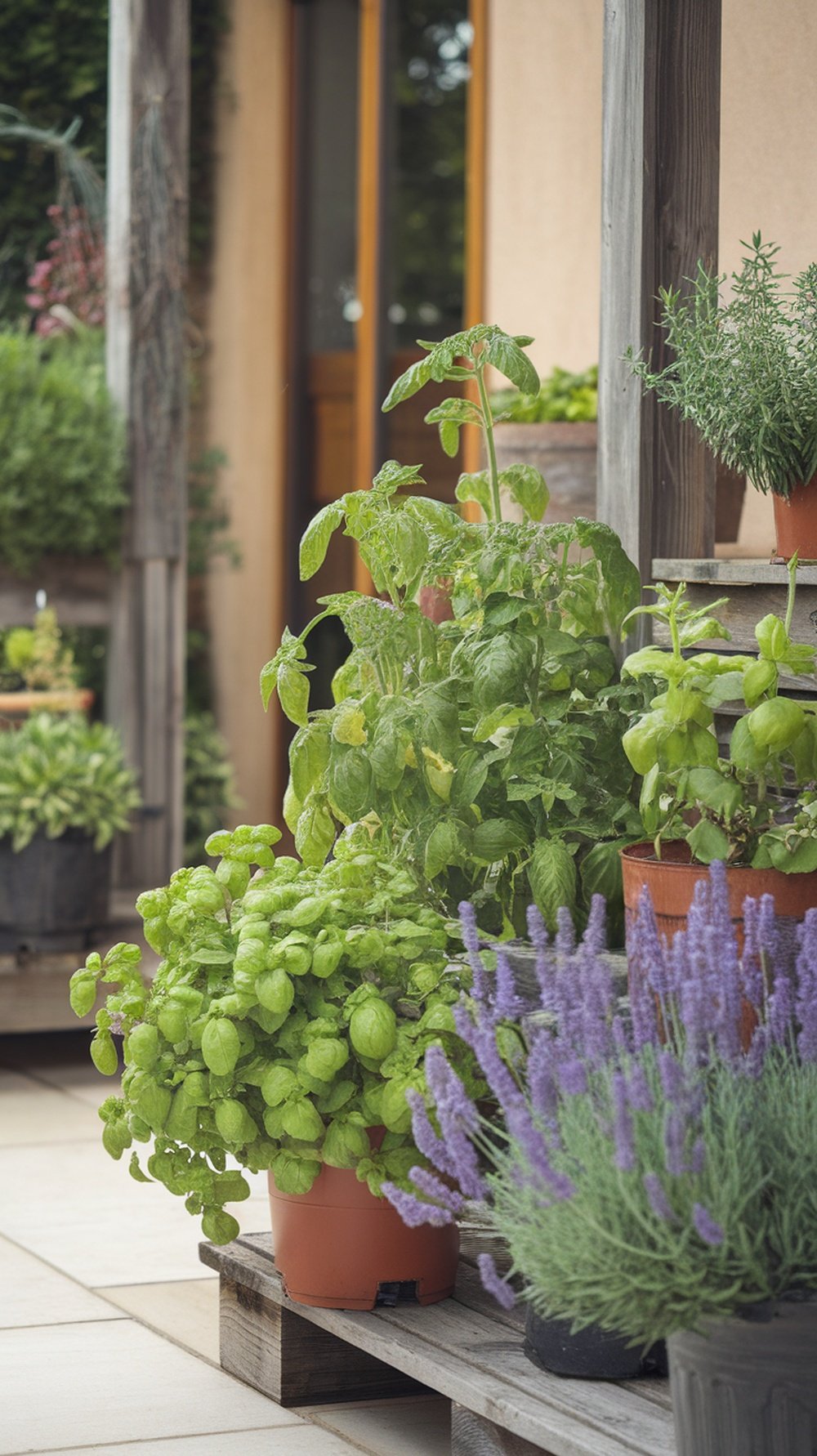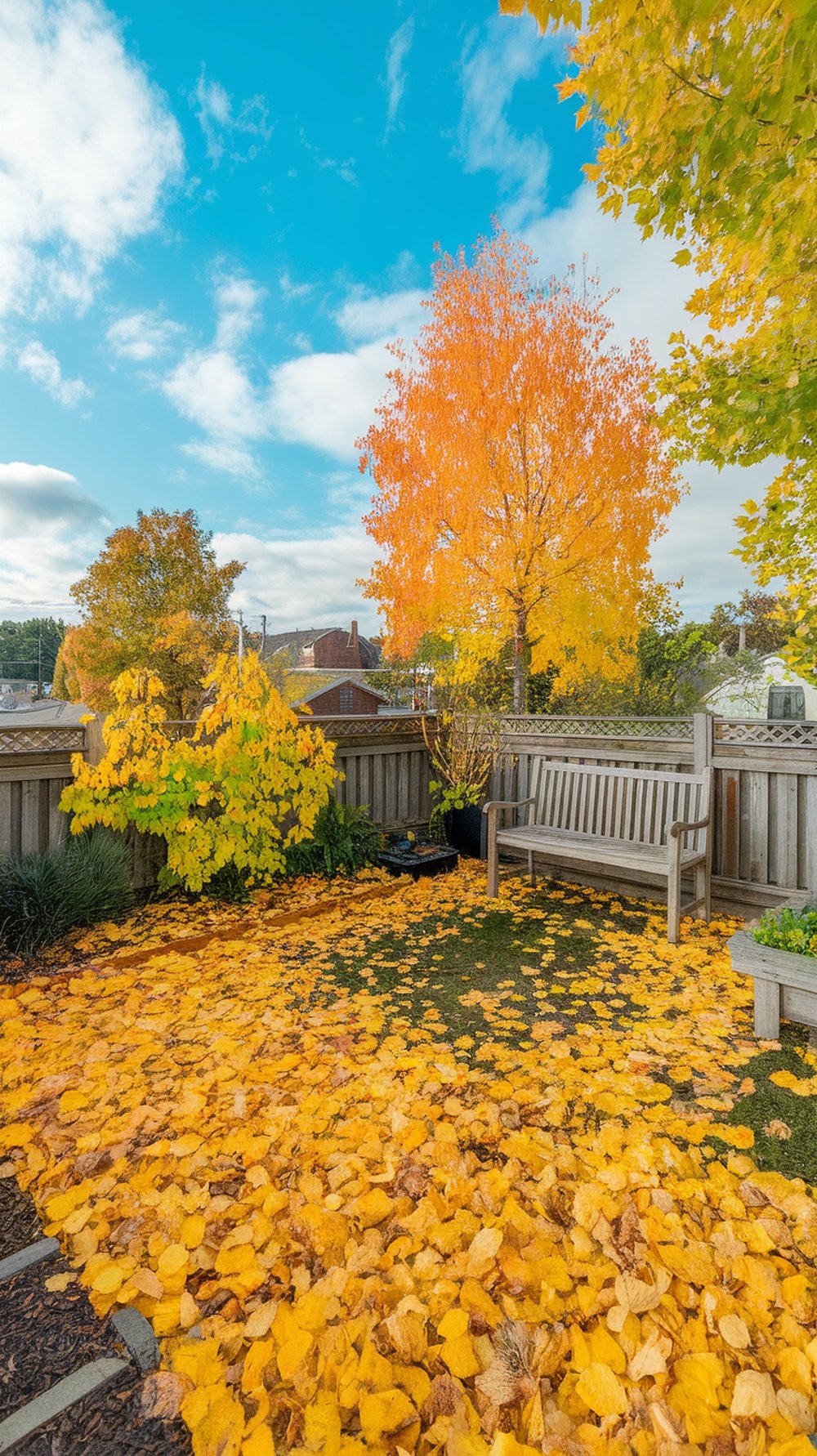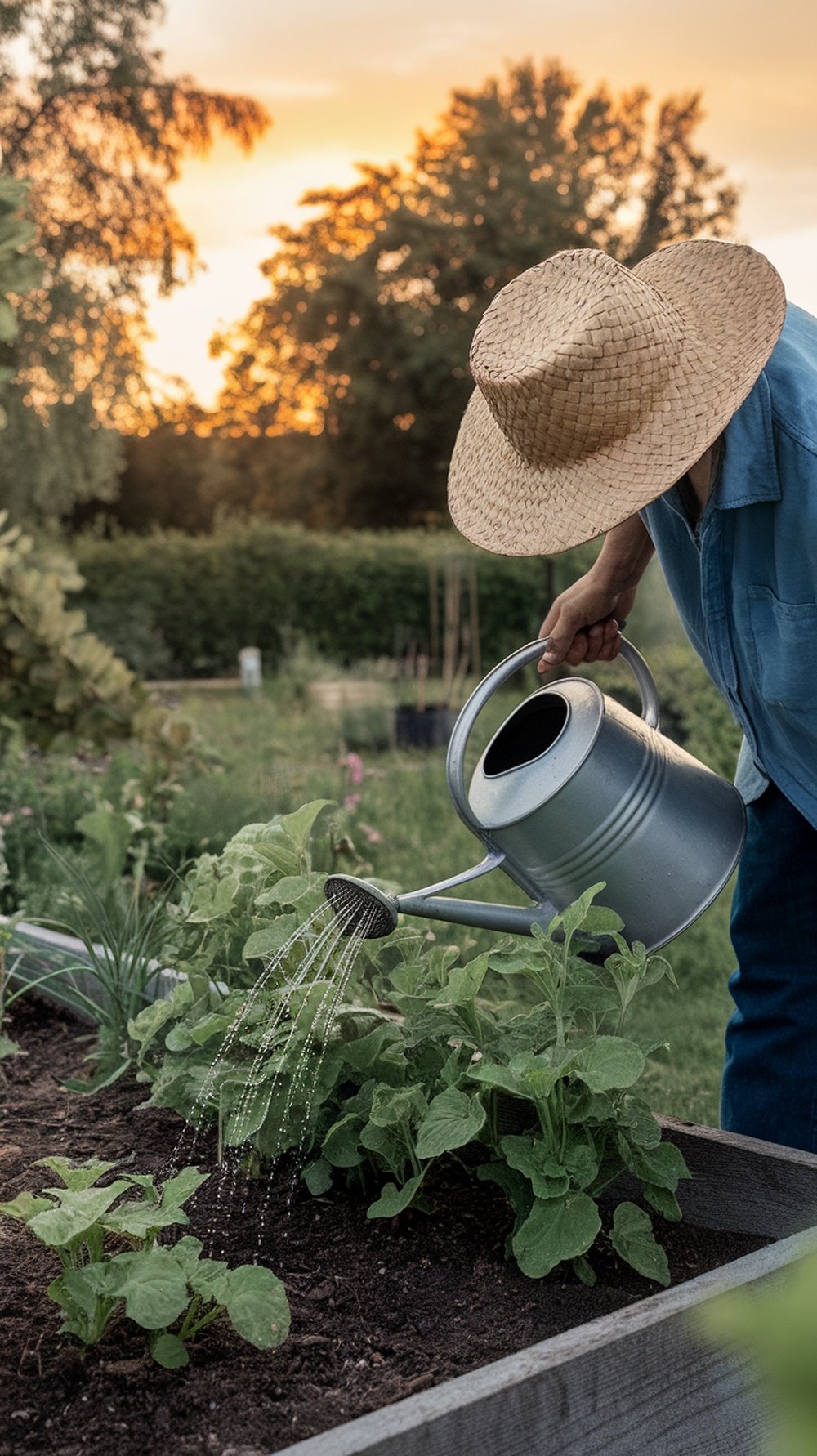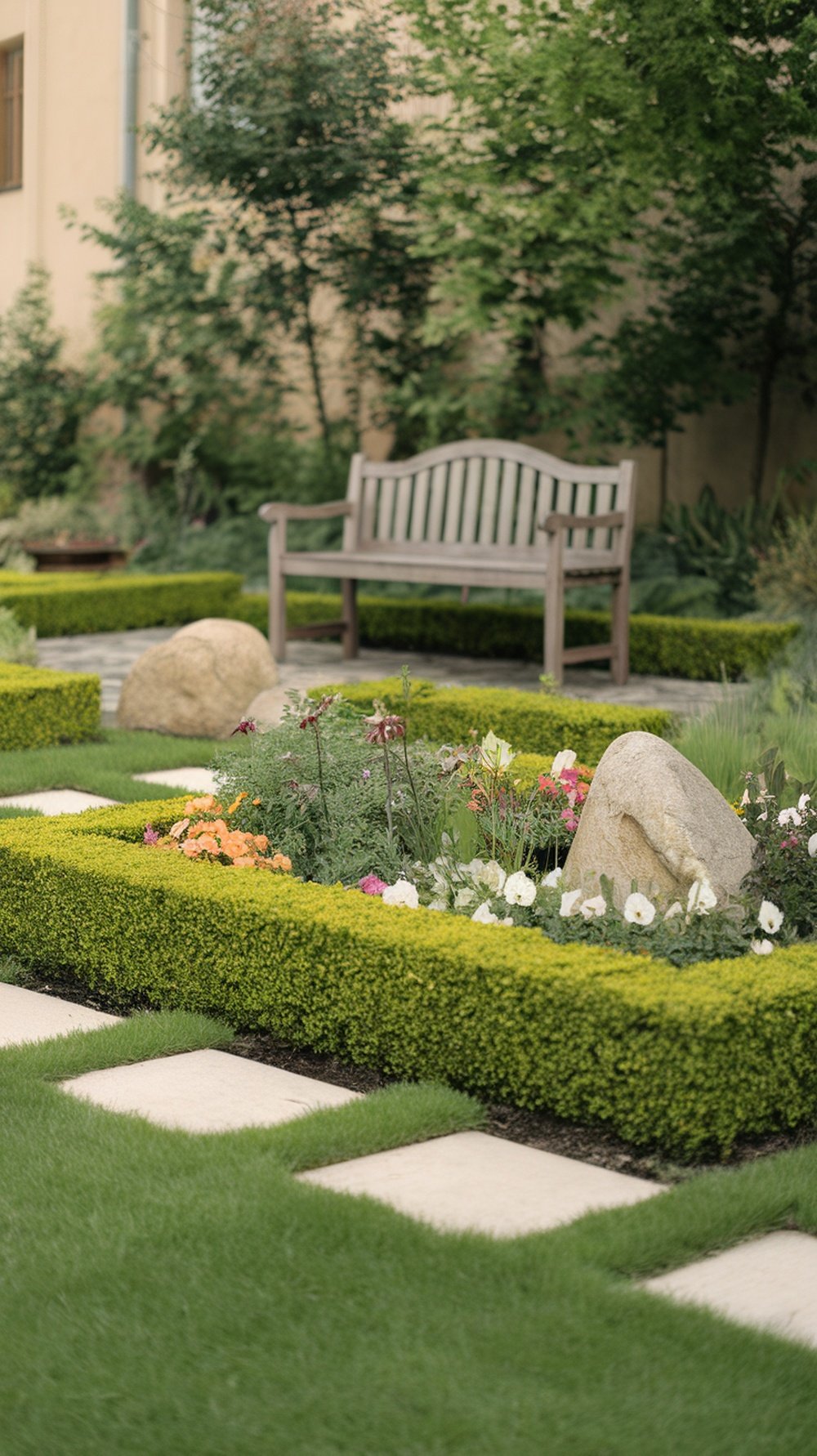Starting your first garden can feel like a lot, but it’s easier than you might think! From picking the perfect spot to choosing the right plants, this guide will help you set everything up for a successful start. Let’s get those hands dirty and grow something beautiful!
Understanding Soil Types and Preparation
Getting your garden ready starts with knowing your soil. The image shows a person digging into the earth, surrounded by gardening tools. A shovel is being used to turn the soil, which is an essential step in preparing your garden bed. The right soil can make all the difference in growing healthy plants.
Soil comes in various types: sandy, clay, silt, and loamy. Sandy soil drains quickly but doesn’t hold nutrients well. Clay soil retains water but can be too compact. Silt soil is a nice middle ground, while loamy soil is often the best choice as it balances drainage and nutrient retention.
Mixing organic matter, like compost, into your soil can enhance its quality. This will help with aeration and provide essential nutrients for your plants. Don’t forget to check the pH level of your soil, too, as this affects nutrient availability. You can find simple soil test kits at most garden centers.
With the proper preparation, your garden can thrive. Happy digging!
Selecting Plants Suitable for Beginners
Starting a garden can be fun and rewarding, especially when you choose the right plants. In the image, we see a lovely arrangement of potted plants, showcasing some great options for beginners.
First up, herbs like basil and rosemary are perfect for those just getting started. They grow well in pots and provide fresh flavors for your meals. Plus, they don’t require a lot of fuss.
Next, leafy greens, like the ones peeking out in the image, are easy to care for. They thrive in various conditions and can be harvested multiple times.
Don’t forget about flowers like lavender! This plant adds color and a pleasant scent to your space while being low-maintenance. It’s a great way to brighten up your garden.
In short, focus on herbs, leafy greens, and hardy flowers to kick off your gardening journey. These plants will help you feel accomplished while you learn the ropes.
Choosing the Right Location for Your Garden
When starting your first garden, picking the right spot is key. Look for an area that gets plenty of sunlight. Most plants thrive in at least 6-8 hours of direct sunlight each day. In the image, you see a cozy space filled with vibrant autumn leaves. This colorful setting reminds us that nature can be beautiful even as seasons change.
Avoid areas with too much shade or where water tends to pool. You want a location that drains well and doesn’t keep excess moisture around the roots of your plants. The image shows a neat yard with a bench, making it a perfect resting spot while you admire your plants.
Also, think about accessibility. You’ll want to reach your garden easily for watering, weeding, and harvesting. The open space in this picture suggests ease of movement, which is something to consider for your own setup. Finally, remember to factor in wind exposure. Protecting your plants from strong winds will help them thrive.
Establishing a Watering Schedule
When you set up a garden, figuring out how often to water is key. You want your plants to thrive without drowning them. The image shows someone watering their plants, which is a great reminder of the care your garden needs.
A good rule of thumb is to water in the early morning or late afternoon. This helps prevent evaporation. If you’re watering in the heat of the day, much of your effort may go to waste. The gentle light of the evening can provide a calming backdrop, just like in this photo.
Pay attention to the soil. If it feels dry a couple of inches down, it’s time to water. Plants typically need about an inch of water per week, but this can vary based on your climate and the type of plants you have. Check in with your garden regularly, and adjust your schedule if you notice signs of stress.
A simple way to keep track is to use a calendar or an app on your phone. This can help you stay consistent. Don’t forget to take into account any rain; nature often helps out!
Incorporating Garden Decor and Layout
Creating a beautiful garden is not just about the plants. It’s also about how you arrange everything. The layout can make your garden feel inviting and serene. In the image, you can see a lovely bench nestled among neatly trimmed hedges and colorful flowers. This setup invites you to sit and enjoy the beauty around you.
The use of natural stones in the garden bed adds a touch of elegance and blends well with the greenery. It’s easy to add these elements to your own space. Choosing a few decorative stones or a charming bench can enhance the garden’s overall look and provide a cozy spot to relax.
When planning your garden, think about how you want the space to feel. Do you want a vibrant and lively area with bright flowers, or a calm retreat with greenery and soft colors? Layout plays a big role in that. Pathways, like the stone slabs shown, guide visitors through your garden while also adding structure.
Don’t forget to include plants of varying heights and colors. This variety can make your garden pop! Mixing in decorative elements with your plants will create a balanced and attractive environment. Take inspiration from the image and let your creativity flow!
